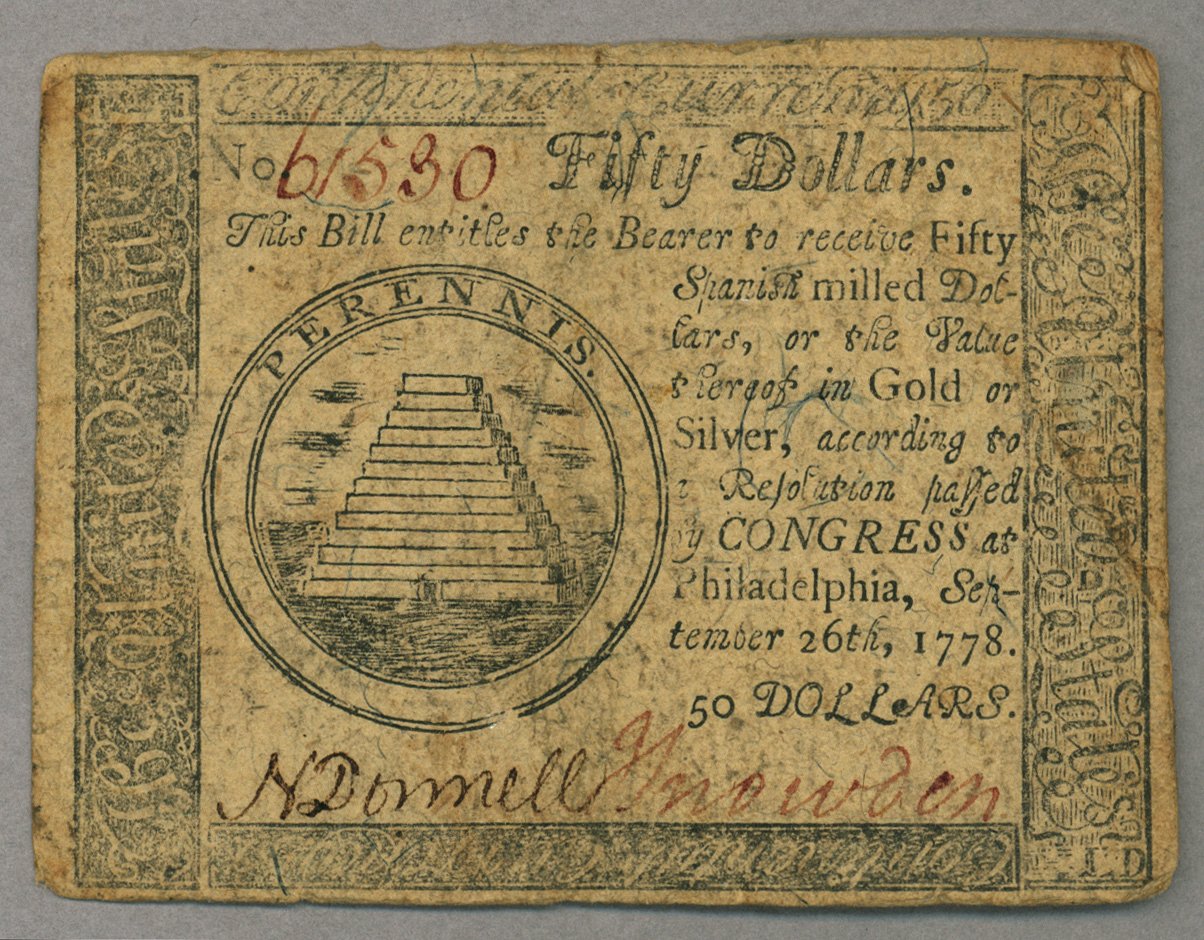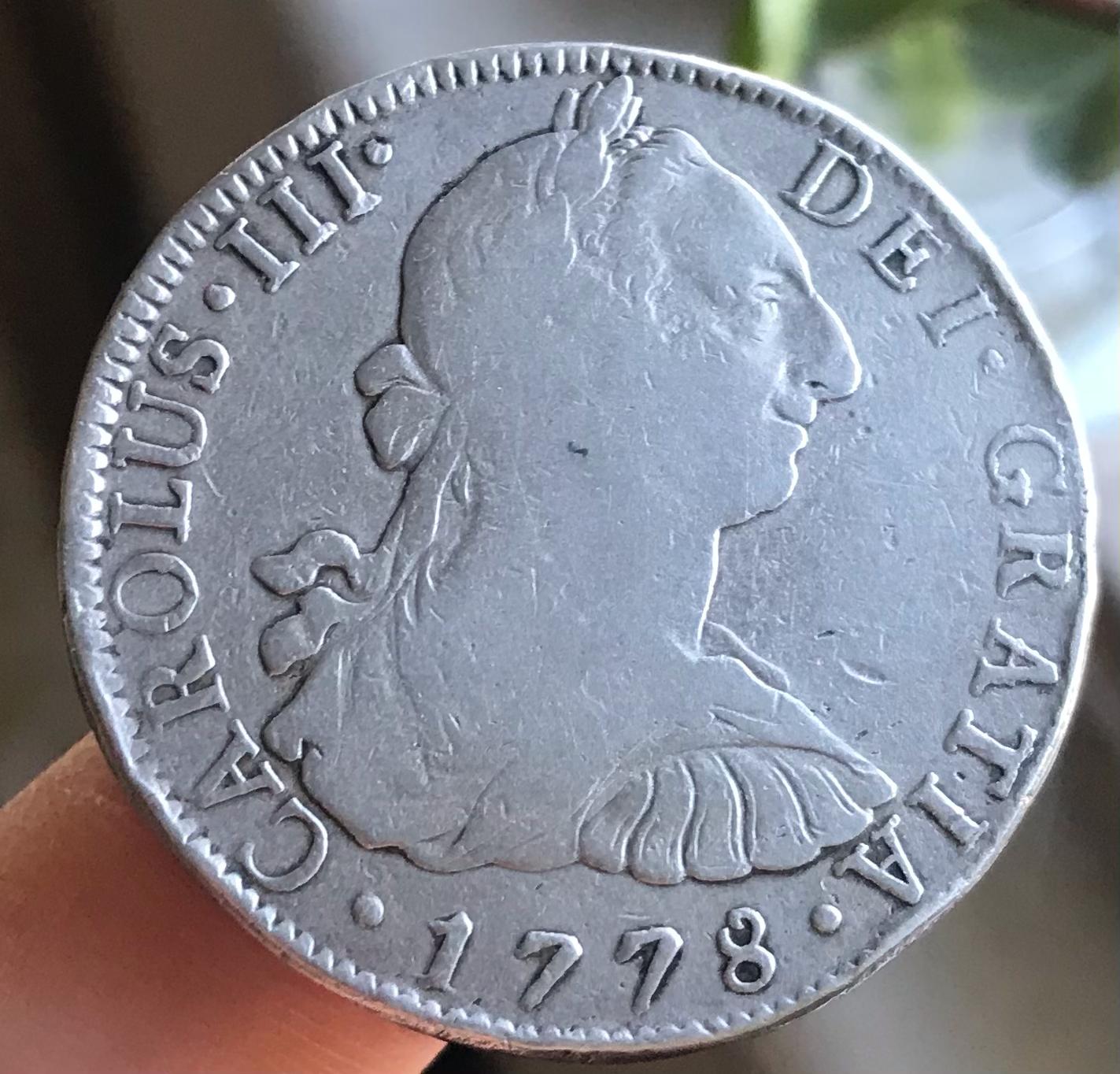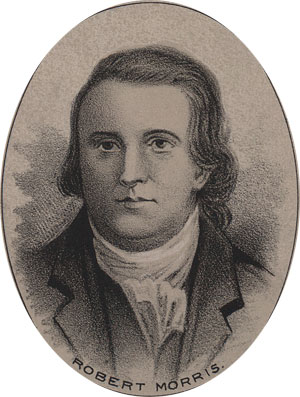|
History Of The United States Dollar
The history of the United States dollar began with moves by the Founding Fathers of the United States of America to establish a national currency based on the Spanish silver dollar, which had been in use in the North American colonies of the United Kingdom for over 100 years prior to the United States Declaration of Independence. The new Congress's Coinage Act of 1792 established the United States dollar as the country's standard unit of money, creating the United States Mint tasked with producing and circulating coinage. Initially defined under a bimetallic standard in terms of a fixed quantity of silver or gold, it formally adopted the gold standard in 1900, and finally eliminated all links to gold in 1971. Since the founding of the Federal Reserve System in 1913 as the central bank of the United States, the dollar has been primarily issued in the form of Federal Reserve Notes. The United States dollar is now the world's primary reserve currency held by governments worldwide fo ... [...More Info...] [...Related Items...] OR: [Wikipedia] [Google] [Baidu] |
History Of Money
The history of money concerns the development throughout time of systems that provide the functions of money. Such systems can be understood as means of trading wealth indirectly; not directly as with bartering. Money is a mechanism that facilitates this process. Money may take a physical form as in coins and notes, or may exist as a written or electronic account. It may have intrinsic value (commodity money), be legally exchangeable for something with intrinsic value (representative money), or only have nominal value (fiat money). Overview The invention of money took place before the beginning of written history.Denise Schmandt-Besserat [...More Info...] [...Related Items...] OR: [Wikipedia] [Google] [Baidu] |
Coinage Act Of 1857
The Coinage Act of 1857 (Act of Feb. 21, 1857, Chap. 56, 34th Cong., Sess. III, 11 Stat. 163) was an act of the United States Congress which ended the status of foreign coins as legal tender, repealing all acts "authorizing the currency of foreign gold or silver coins". Specific coins would be exchanged at the Treasury and re-coined. The act is divided into seven sections. Background Before the Act, foreign coins, such as the Spanish dollar, were widely used Murray N. Rothbard"The Mystery of Banking"(pdf), p.10, 1983-11-28. and allowed as legal tender by the Act of April 10, 1806.Library of Congress"An Act regulating the currency of foreign coins in the United States" passed on April 10, 1806, referenced 2009-08-24. The Coinage Act of 1857 also discontinued the half cent. Furthermore, the penny was reduced in size. The large cent was discontinued and regular coinage of the Flying Eagle cent began. History In the newly created union after the Revolutionary War and up until 179 ... [...More Info...] [...Related Items...] OR: [Wikipedia] [Google] [Baidu] |
Contract Clause
Article I, Section 10, Clause 1 of the United States Constitution, known as the Contract Clause, imposes certain prohibitions on the states. These prohibitions are meant to protect individuals from intrusion by state governments and to keep the states from intruding on the enumerated powers of the U.S. federal government. Among other things, this clause prohibits states from issuing their own money and from enacting legislation relieving particular persons of their contractual obligations. Although the clause recognizes people's right to form contracts, it allows the government to create laws barring contracts offending public policy, such as contracts for sex or for child labor. Likewise, though prohibited from creating a state currency, states are not barred from making "gold and silver coin a tender in payment of debts". Text Treaties, alliances, or confederations At the time of the Civil War, this clause was one of the provisions upon which the Supreme Cour ... [...More Info...] [...Related Items...] OR: [Wikipedia] [Google] [Baidu] |
Philadelphia
Philadelphia, often called Philly, is the largest city in the Commonwealth of Pennsylvania, the sixth-largest city in the U.S., the second-largest city in both the Northeast megalopolis and Mid-Atlantic regions after New York City. Since 1854, the city has been coextensive with Philadelphia County, the most populous county in Pennsylvania and the urban core of the Delaware Valley, the nation's seventh-largest and one of world's largest metropolitan regions, with 6.245 million residents . The city's population at the 2020 census was 1,603,797, and over 56 million people live within of Philadelphia. Philadelphia was founded in 1682 by William Penn, an English Quaker. The city served as capital of the Pennsylvania Colony during the British colonial era and went on to play a historic and vital role as the central meeting place for the nation's founding fathers whose plans and actions in Philadelphia ultimately inspired the American Revolution and the nation's inde ... [...More Info...] [...Related Items...] OR: [Wikipedia] [Google] [Baidu] |
Philadelphia Convention
The Constitutional Convention took place in Philadelphia from May 25 to September 17, 1787. Although the convention was intended to revise the league of states and first system of government under the Articles of Confederation, the intention from the outset of many of its proponents, chief among them James Madison of Virginia and Alexander Hamilton of New York, was to create a new Frame of Government rather than fix the existing one. The delegates elected George Washington of Virginia, former commanding general of the Continental Army in the late American Revolutionary War (1775–1783) and proponent of a stronger national government, to become President of the convention. The result of the convention was the creation of the Constitution of the United States, placing the Convention among the most significant events in American history. The convention took place in the old Pennsylvania State House (now known as Independence Hall) in Philadelphia. At the time, the convention was ... [...More Info...] [...Related Items...] OR: [Wikipedia] [Google] [Baidu] |
Promissory Notes
A promissory note, sometimes referred to as a note payable, is a legal instrument (more particularly, a financing instrument and a debt instrument), in which one party (the ''maker'' or ''issuer'') promises in writing to pay a determinate sum of money to the other (the ''payee''), either at a fixed or determinable future time or on demand of the payee, under specific terms and conditions. Overview The terms of a note usually include the principal amount, the interest rate if any, the parties, the date, the terms of repayment (which could include interest) and the maturity date. Sometimes, provisions are included concerning the payee's rights in the event of a default, which may include foreclosure of the maker's assets. In foreclosures and contract breaches, promissory notes under CPLR 5001 allow creditors to recover prejudgement interest from the date interest is due until liability is established. For loans between individuals, writing and signing a promissory note are often ... [...More Info...] [...Related Items...] OR: [Wikipedia] [Google] [Baidu] |
Bullion Coin
Bullion is non-ferrous metal that has been refined to a high standard of elemental purity. The term is ordinarily applied to bulk metal used in the production of coins and especially to precious metals such as gold and silver. It comes from the Anglo-Norman term for a melting-house where metal was refined, and earlier from French , "boiling". Although precious metal bullion is no longer used to make coins for general circulation, it continues to be held as an investment with a reputation for stability in periods of economic uncertainty. To assess the purity of gold bullion, the centuries-old technique of fire assay is still employed, together with modern spectroscopic instrumentation, to accurately determine its quality. As investment The specifications of bullion are often regulated by market bodies or legislation. In the European Union, the minimum purity for gold to be referred to as "bullion", which is treated as investment gold with regard to taxation, is 99.5% for gold ... [...More Info...] [...Related Items...] OR: [Wikipedia] [Google] [Baidu] |
Bank Of North America
The Bank of North America was the first chartered bank in the United States, and served as the country's first ''de facto'' central bank. Chartered by the Congress of the Confederation on May 26, 1781, and opened in Philadelphia on January 7, 1782, it was based upon a plan presented by US Superintendent of Finance Robert Morris on May 17, 1781, based on recommendations by Revolutionary era figure Alexander Hamilton. Although Hamilton later noted its "essential" contribution to the war effort, the Pennsylvania government objected to its privileges and reincorporated it under state law, making it unsuitable as a national bank under the federal Constitution. Instead Congress chartered a new bank, the First Bank of the United States, in 1791, while the Bank of North America continued as a private concern. History Congressional charter In May 1781 Alexander Hamilton revealed that he had recommended Robert Morris for the position of Superintendent of Finance of the United States ... [...More Info...] [...Related Items...] OR: [Wikipedia] [Google] [Baidu] |
Superintendent Of Finance Of The United States
Superintendent of Finance of the United States was the head of Department of Finance, which is an executive office during the Confederation period with power similar to a finance ministry. The only person to hold the office was Robert Morris, who served from 1781 to 1784, with the assistance of Gouverneur Morris. Background Various boards and committees were formed from June 3, 1775 on to handle financial matters for the provisional government of the United States, the Continental Congress. But, as early as 1776, dissatisfaction with this system led Robert Morris, in a message to a Committee of Secret Correspondence, to argue for the use of executives. Congress was open to other methods of finance administration. In late 1778 after the Franco-American alliance formed, a congressional appeal to Welsh finance writer Dr. Richard Price was made for him to come and reorganize their finances, which he declined. In early 1779, Congress requested that their European agents look into me ... [...More Info...] [...Related Items...] OR: [Wikipedia] [Google] [Baidu] |
Robert Morris (financier)
Robert Morris Jr. (January 20, 1734May 8, 1806) was an English-born merchant and a Founding Father of the United States. He served as a member of the Pennsylvania legislature, the Second Continental Congress, and the United States Senate, and he was a signer of the Declaration of Independence, the Articles of Confederation, and the United States Constitution. From 1781 to 1784, he served as the Superintendent of Finance of the United States, becoming known as the "Financier of the Revolution." Along with Alexander Hamilton and Albert Gallatin, he is widely regarded as one of the founders of the financial system of the United States. Born in Liverpool, Morris migrated to North America in his teens, quickly becoming a partner in a successful shipping firm based in Philadelphia. In the aftermath of the French and Indian War, Morris joined with other merchants in opposing British tax policies such as the 1765 Stamp Act. By 1775 he was the richest man in America. After the outbreak ... [...More Info...] [...Related Items...] OR: [Wikipedia] [Google] [Baidu] |
Treasury Bond
United States Treasury securities, also called Treasuries or Treasurys, are government bond, government debt instruments issued by the United States Department of the Treasury to finance government spending as an alternative to taxation. Since 2012, U.S. government debt has been managed by the Bureau of the Fiscal Service, succeeding the Bureau of the Public Debt. There are four types of marketable Treasury securities: #Treasury bill, Treasury bills, #Treasury note, Treasury notes, #Treasury bond, Treasury bonds, and #TIPS, Treasury Inflation Protected Securities (TIPS). The government sells these securities in auctions conducted by the Federal Reserve Bank of New York, after which they can be traded in secondary markets. Non-marketable securities include savings bonds, issued to the public and transferable only as gifts; the State and Local Government Series (SLGS), purchaseable only with the proceeds of state and municipal bond sales; and the Government Account Series, purc ... [...More Info...] [...Related Items...] OR: [Wikipedia] [Google] [Baidu] |
Benjamin Franklin
Benjamin Franklin ( April 17, 1790) was an American polymath who was active as a writer, scientist, inventor, statesman, diplomat, printer, publisher, and political philosopher. Encyclopædia Britannica, Wood, 2021 Among the leading intellectuals of his time, Franklin was one of the Founding Fathers of the United States, a drafter and signer of the United States Declaration of Independence, and the first United States Postmaster General. As a scientist, he was a major figure in the American Enlightenment and the history of physics for his studies of electricity, and for charting and naming the current still known as the Gulf Stream. As an inventor, he is known for the lightning rod, bifocals, and the Franklin stove, among others. He founded many civic organizations, including the Library Company, Philadelphia's first fire department, and the University of Pennsylvania. Isaacson, 2004, p. Franklin earned the title of "The First American" for his early and indefa ... [...More Info...] [...Related Items...] OR: [Wikipedia] [Google] [Baidu] |






-Pennsylvania-6_Aug_1789.jpg)


